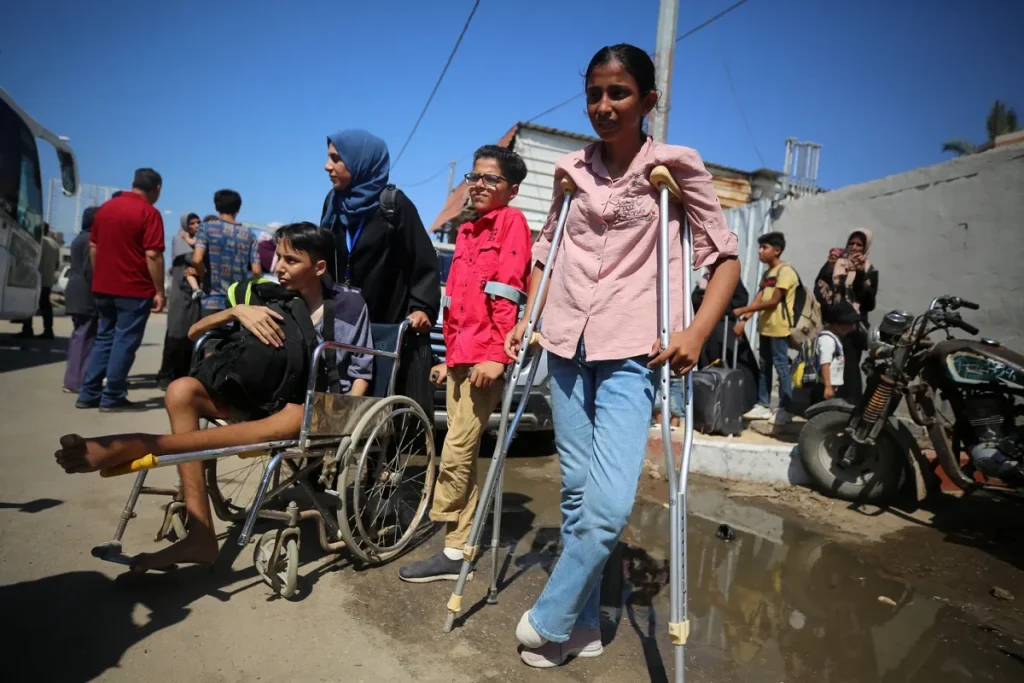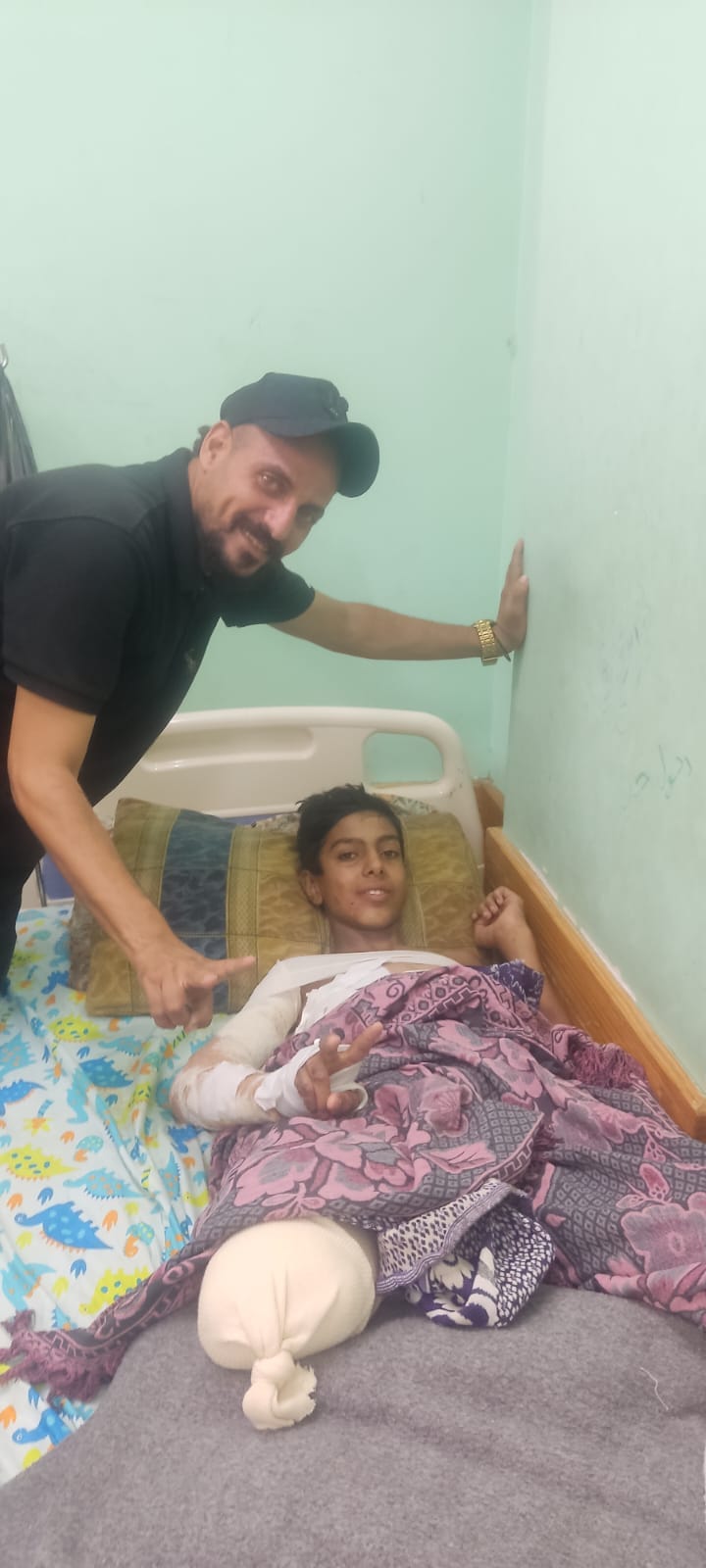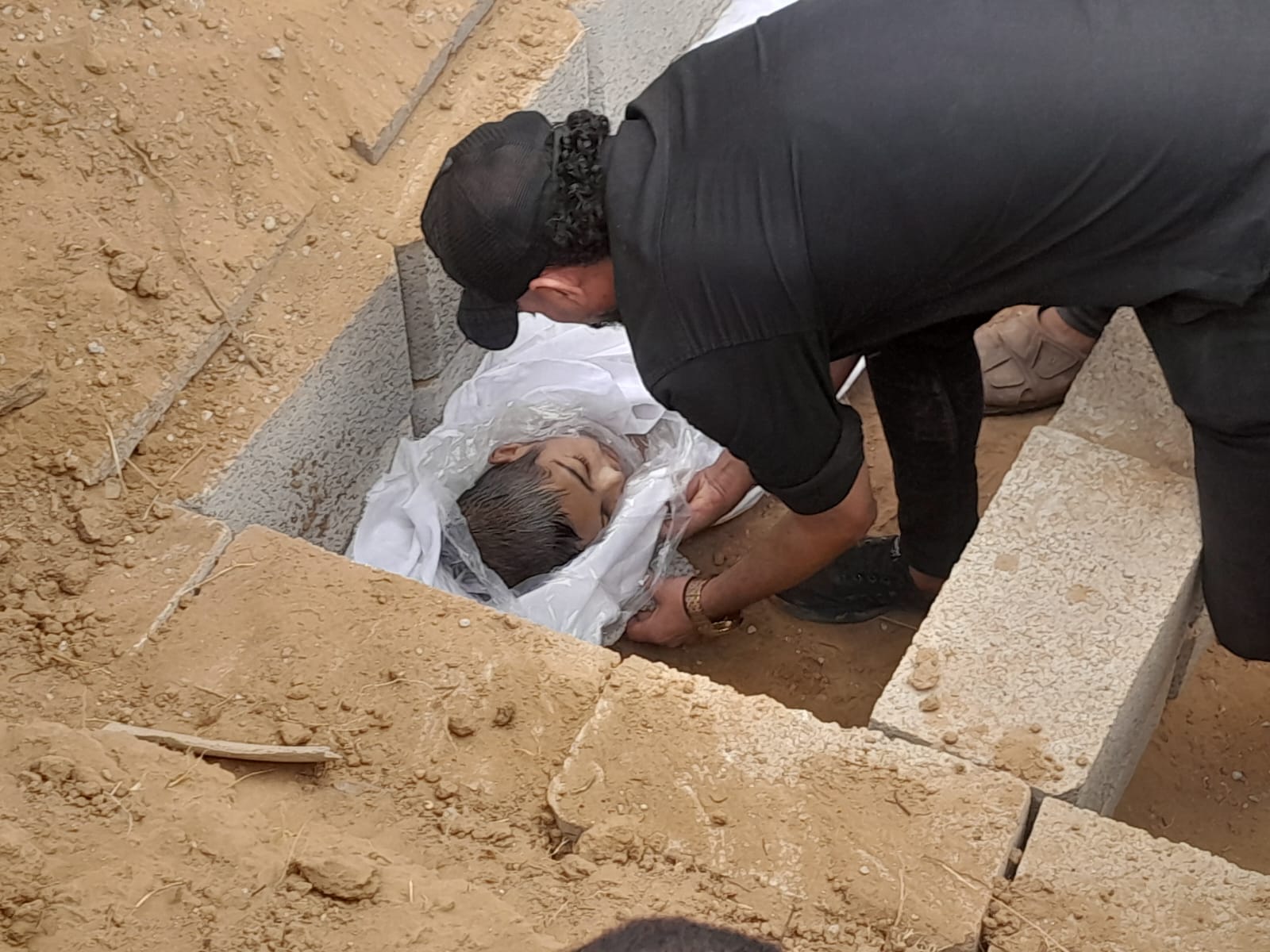For the past 6 months, only 237 patients have been evacuated out of Gaza

AMBA GUERGUERIAN, DROP SITE NEWS, NOV 01, 2024
An increasing number of Palestinians in Gaza, including children, are dying as a result of Israel severely curtailing the number of medical evacuations it grants, according to the United Nations, international NGOs, the Palestinian ministry of health in Gaza, and grassroots aid groups.
The UN estimates that some 14,000 patients, including 2,500 children, are currently in urgent need of medical evacuation. But over the past six months—since the Israeli military invaded Rafah and seized control of the Gaza side of the Rafah border crossing on May 7—only 237 patients have been medically evacuated out of Gaza, a spokesperson for the World Health Organization told Drop Site News, 127 of them children. At that rate, it would take over 29 years for everyone seeking treatment abroad to be allowed out.
From the beginning of the Israeli assault on Gaza in October 2023 through May 7, 2024, a total of 4,843 patients were medically evacuated, according to WHO, a rate equivalent to around 690 patients a month, an inadequate number even then. Since the closure of the Rafah border crossing, the rate has dropped to the equivalent of around just 40 a month.
The Coordinator of Government Activities in the Territories (COGAT), the branch of the Israeli military that oversees the West Bank and Gaza, has been denying patients in need of medical treatment abroad permission to evacuate on spurious security grounds. “The current obstacle is the security screening approval rate, which is currently less than 1 percent of submitted patients,” the WHO spokesperson said.
Despite the fact that the United Arab Emirates, Turkey, the European Union, and, to a lesser degree, Jordan, are all open to receiving sick and wounded Palestinians from Gaza for treatment, “COGAT has been finding every single reason to deny these cases or delay the process,” an aid worker with a grassroots initiative that works on the ground in Gaza told Drop Site.
Israel’s refusal to grant permissions for medical evacuations also extends to children. “Children in Gaza are dying—not just from the bombs, bullets and shells that strike them—but because, even when ‘miracles happen,’ even when the bombs go off and the homes collapse and the casualties mount, but the children survive, they are then prevented from leaving Gaza to receive the urgent care that would save their lives,” James Elder, the spokesperson for UNICEF said at a press conference last week. “This is not a logistical problem—we have the ability to safely transport these children out of Gaza. It is not a capacity problem—indeed, we were evacuating children at higher numbers just months ago. It is simply a problem that is being completely disregarded.”
“This is not a logistical problem—we have the ability to safely transport these children out of Gaza.”
From January 1 through May 7, an average of 296 children were being medically evacuated each month. Since the closing of the Rafah crossing, the number of children medically evacuated has decreased over tenfold — to just 22 per month. “That is, just 127 children — many suffering from head trauma, amputations, burns, cancer, and severe malnutrition — have been allowed to leave since Rafah closed,” Elder said. “When a patient is denied, there is nothing that can be done.”
Because of this evacuation bottleneck, “we see many, many children dying,” said Mila, founder of Save Gaza’s Children, an NGO working on the ground to support the evacuation process and provide aid to people in Gaza. (Mila goes by her first name only for security reasons.) She recounted the case of a 13-year-old boy named Kareem Thabet whom the group was working to evacuate and who died on Oct. 10 while waiting for permission to travel for treatment to an explosive injury that resulted in 25 percent of his body being burned and both of his legs being amputated. “His house was bombed with white phosphorus. His father died immediately, and his pregnant mother was working to get Kareem evacuated. He died of sepsis,” Mila said, citing various other examples of children who have died waiting for evacuation permissions or are on the cusp of death.


Over the past year, the health care system in Gaza has come under a direct and sustained assault by the Israeli military, with multiple hospitals being bombed, besieged, and invaded by Israeli forces; doctors arrested and killed; and severe restrictions on medicine and medical supplies allowed into Gaza. Over 101,000 people have been injured, with thousands more suffering from hunger, malnutrition and infectious disease as a result of Israel’s restrictions on humanitarian aid and destruction of civilian infrastructure. This week, an independent investigation by a UN Commission of Inquiry found that Israel is carrying out a “concerted policy” to destroy Gaza’s health system.
Drop Site News is a reader-supported publication. To receive new posts and support out work, consider becoming a free or paid subscriber.
How Medical Evacuations Are Processed
Grassroots aid groups and NGOs like Save Gaza’s Children, Human Concern International, The Sameer Project, Heal Palestine and others have been working on the ground to assist in providing treatment as well as supporting the evacuation process. These groups are directed by people abroad working with Gazan doctors and aid workers on the ground who assist with obtaining evacuation referrals for patients and providing aid and medical care for them while they wait to potentially be evacuated. Once one of these groups has a list of people they believe qualify for evacuation, it sends each patient to a government hospital where a specialist reviews the patient’s case and sends the file to a committee that reviews it again and decides whether to make a referral. Gaza’s health ministry then files the referral with the WHO, which forwards it to COGAT for final approval.
As it performs security checks on a patient, COGAT first investigates whether a first or second-degree family member has been in contact with a member of Hamas, according to Mila, overlooking the fact that, outside of its military wing, Hamas has deep political and social roots in Palestinian society in Gaza.
COGAT is also frequently rejecting permissions for companions to travel alongside the sick and wounded being medically evacuated. “I’m hearing back from COGAT that for all 82 people on the list I recently submitted, every single companion was rejected. WHO is going to try and find new companions,” says Miriam Khan of Human Concern International, an NGO working to evacuate people from Gaza. Two of the rejected people on Khan’s list were patients themselves, a 4-year-old and a 5-year-old.
Since May 7, COGAT has also complicated the evacuation process by frequently changing the rules regarding patients’ companions. “Previously WHO was able to send a second request when a mother was rejected,” says Mila. But now that’s not possible, she says, adding that “for a certain time they only allowed females over 50 [years old] to be companions.”
COGAT can also pull a security clearance after initially granting it, even while patients are on the bus leaving Gaza.“WHO once tried to evacuate a very severely injured child from the north,” Mila told Drop Site. “They brought the child to the border, and the child was waiting for hours there, and then Israel rejected the evacuation of the child.”
“COGAT has been rejecting mothers, and it’s been a common occurrence for the last few months where they’ve been rejecting mothers and stating that alternate companions must be provided,” said the head of a grassroots aid group that works on the ground in Gaza and who spoke on condition of anonymity. “In some instances there is no alternate companion, unfortunately. The mother may be the only companion a child has; they may have lost their whole family.”
A 9-year-old boy named Yusuf al-Shurafa, who has two heart conditions, was initially approved for evacuation with his mother Hanan as his companion in March, but Hanan got hepatitis and couldn’t travel at that time. When the family applied again for evacuation in July, Yusuf was approved but Hanan was not. In order for Yusuf to get the live-saving care he needed, the family had to separate. “My heart ached with an intensity I had never experienced,” Hanan told Drop Site.
Yusuf, his father Mustafa, and his two-year-old brother Bashir then evacuated to the UAE. Hanan, who was an English teacher before the genocide, was forced to stay in Gaza and is now working as a teacher at the Refaat Alareer camp. “Yusuf has started his treatment, and Bashir is going to nursery, and Mustafa is trying to be the role of mother and father,” Hanan said. “Bashir is still very young and is struggling without me. He doesn’t understand what is happening. He waits for me everyday. I am not myself anymore. I feel I am lost without them, and my mental health isn’t good.”
When the Rafah crossing closed, there were no medical evacuations for over two months, with the first patients being evacuated at the end of June, according to a WHO spokesperson. There have been a total of six group evacuations since then, including one that had just three patients.
Evacuations are now conducted through the Kerem Shalom crossing, where patients are then transported to the Ramon Airport in southern Israel to be flown to receiving countries. Yet the very notion of having to be medically evacuated in the context of the war on Gaza is in itself a form of forced displacement.
“If the correct medical personnel were being allowed into Gaza and if the healthcare system was not collapsing, perhaps a lot of these people’s lives could be saved within Gaza without having to be evacuated,” said an aid worker with Human Concern International, a Canada-based charity that works on evacuations. “An evacuation is not something to be celebrating or to be proud of. It is part of the problem of displacing these families and these children. Once they travel abroad and their treatment concludes, what happens to them after? Where do they go?”
Leave a Reply
You must be logged in to post a comment.